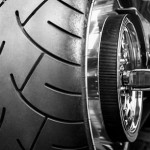Contents

The engine is considered the heart of all vehicles as it’s what makes them move. This complicated, yet straightforward part relies on multiple other components to run efficiently and safely. One of these components is the valve spring, which helps provide the right amount of pressure in the engine. Pressure is crucial even in automotive engines as it helps make the combustion process safer and more efficient, resulting in a more efficient engine as well. But like any component in your vehicle, valve auto springs might need to be replaced. This can be due to exposure to heat that can result in overheating, but no matter the reason for their replacement, installing new performance valve springs is something similar to preventative vehicle maintenance – you save the old springs from affecting the lifespan of other nearby components or the engine itself.
How Do I Know What Valve Springs to Buy?

The most important factor to consider when buying valve springs is their compatibility with the camshaft manufacturer. This requires you to take a good look at different types of automotive valve springs to understand the specs of a valve spring.
Types of Valve Springs

Beehive
A beehive valve spring is made with progressively wound coils from an ovate wire which is combined with smaller diameter top coils. This design enhances spring frequency and improves control under high RPM and boost conditions. A beehive design spring is made to provide more lift before going in a coil blind.
Cylindrical
If you want to get valve springs that provide the most economical way of keeping the valvetrain in tip-top shape then you should consider getting cylindrical springs. These springs are great for people who drive their cars every day without putting much stress on them.
Dual Cylindrical
With a dual cylindrical valve spring, you’re able to reduce the oscillation in the valvetrain since they come with two springs with different frequencies. The difference in frequency makes for great dampening harmonics and it adds enough pressure to control valve movement.
Conical
If you want your new springs to be able to provide excellent harmonic stability, you should go with conical springs. Conical automotive valve springs are great at providing stability. However, their downside is their weight which can cause excessive wear.
What to Consider in a Valve Spring

Diameter
A valve spring comes in different styles, but it also comes in different sizes which refer to the diameter of the spring. It’s important to get a spring that will fit the cylinder head. You can’t just get a bigger or a smaller spring expecting to get the most of it without it fitting the cylinder head.
Pressure
One of the more important specs you need to look for in a valve spring is pressure. Like the diameter of springs, you need to get the pressure right, too. Low pressure will cause what is known as valve float, whereas high pressure can easily cause excessive wear as well as damage to the valvetrain.
Rate
The rate or the stiffness of the spring is what helps determine the pressure of the said spring. A stiffer spring won’t be as forgiving as a softer one, but on the other hand, a softer spring won’t provide as much control which again, leads to valve float.
Height
Height is directly tied to the rate of the spring. Spring height also determines pressure, as taller springs make for low-pressure springs and vice versa. As you can see everything is tied together.
How to Install Valve Springs

1. Before you start installing a new valve spring you need to make sure you note the height of the springs currently installed. This distance is measured from the bottom of the retainer to the surface, where you have the spring resting on the head.
2. Once that’s done, remove the spring according to the manual provided by the manufacturer of the springs. Make sure to have the distance between the retainer and the top of the valve seal greater than the lift of the valve. If that’s not the case, it can cause early camshaft failure, so make sure to check the guide to see if the distance above is not greater than the lift of the valve.
3.When you’ve installed the new springs you need to then check for coil bind. This means that when you have the valve open it needs to have at least 1.5mm of clearance between the coils of the outer and inner springs. If there is not enough clearance you need to change the retainer or the valve to get more height.
4. If that doesn’t get the job done you will need to put a spring that can handle more lift or choose to machine the spring you have to add extra depth to it. With enough clearance, you will be able to seat the valve. Just make sure the rocker arm is designed to work with the spring diameter and you’re good to go.



Comments are closed.